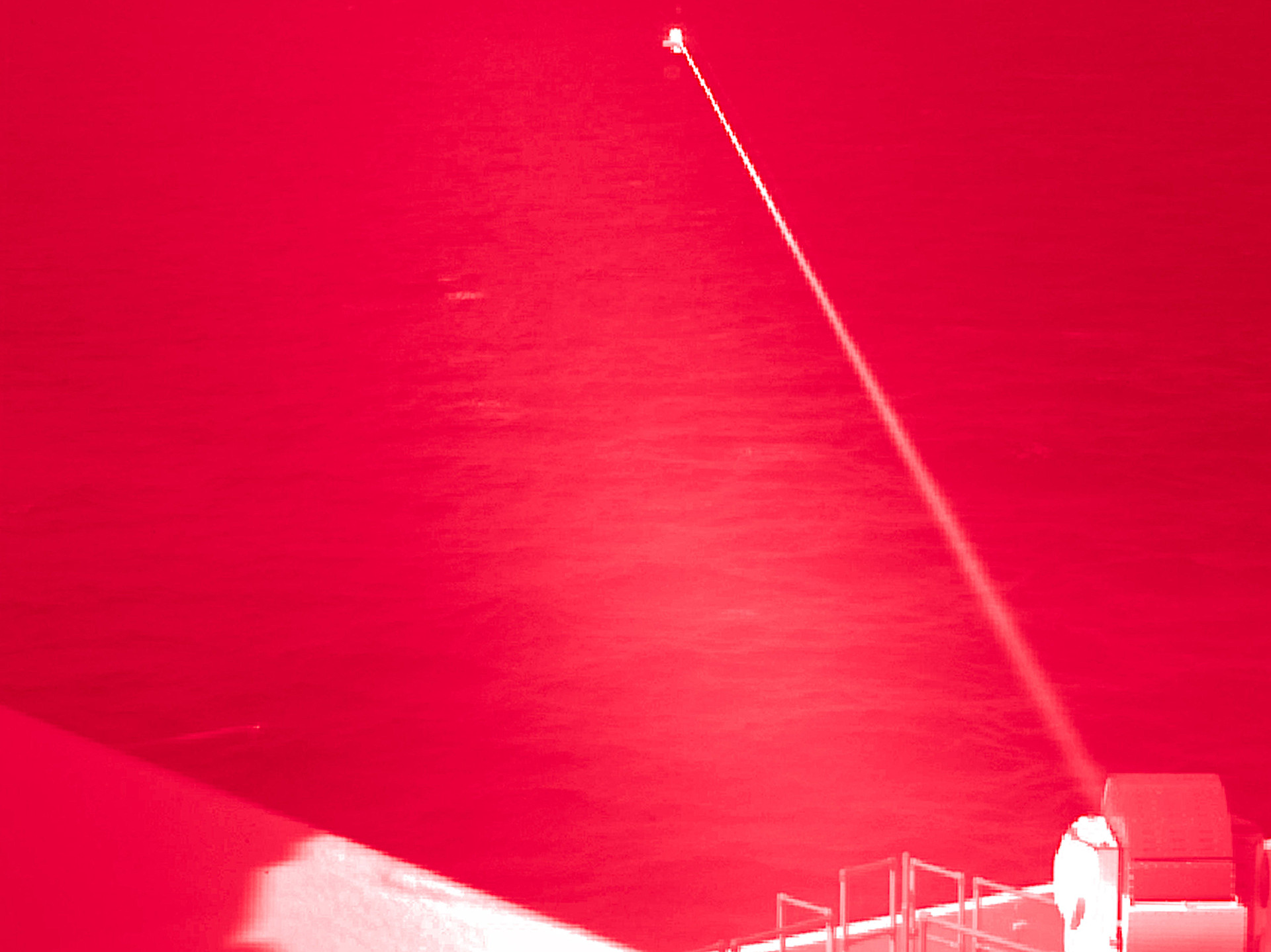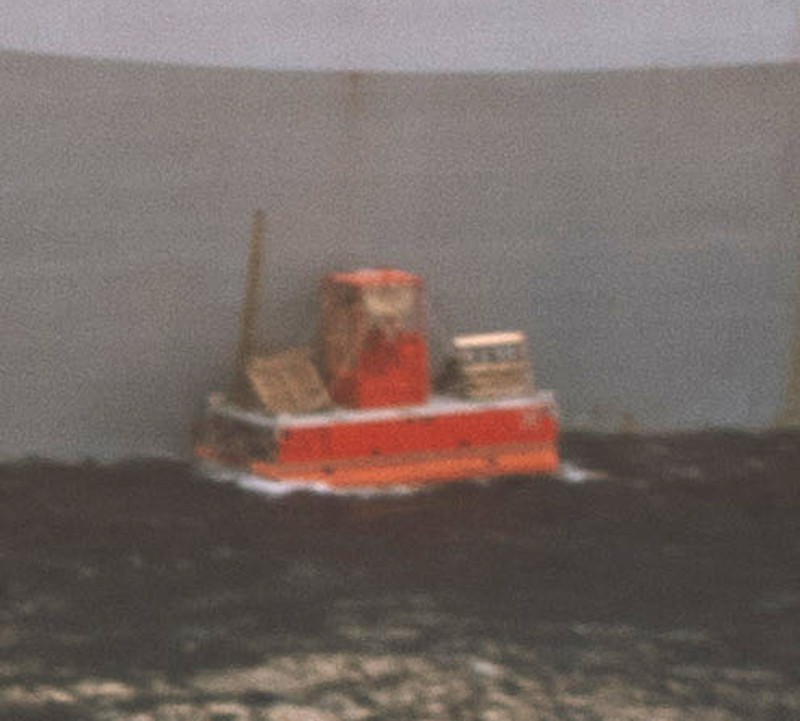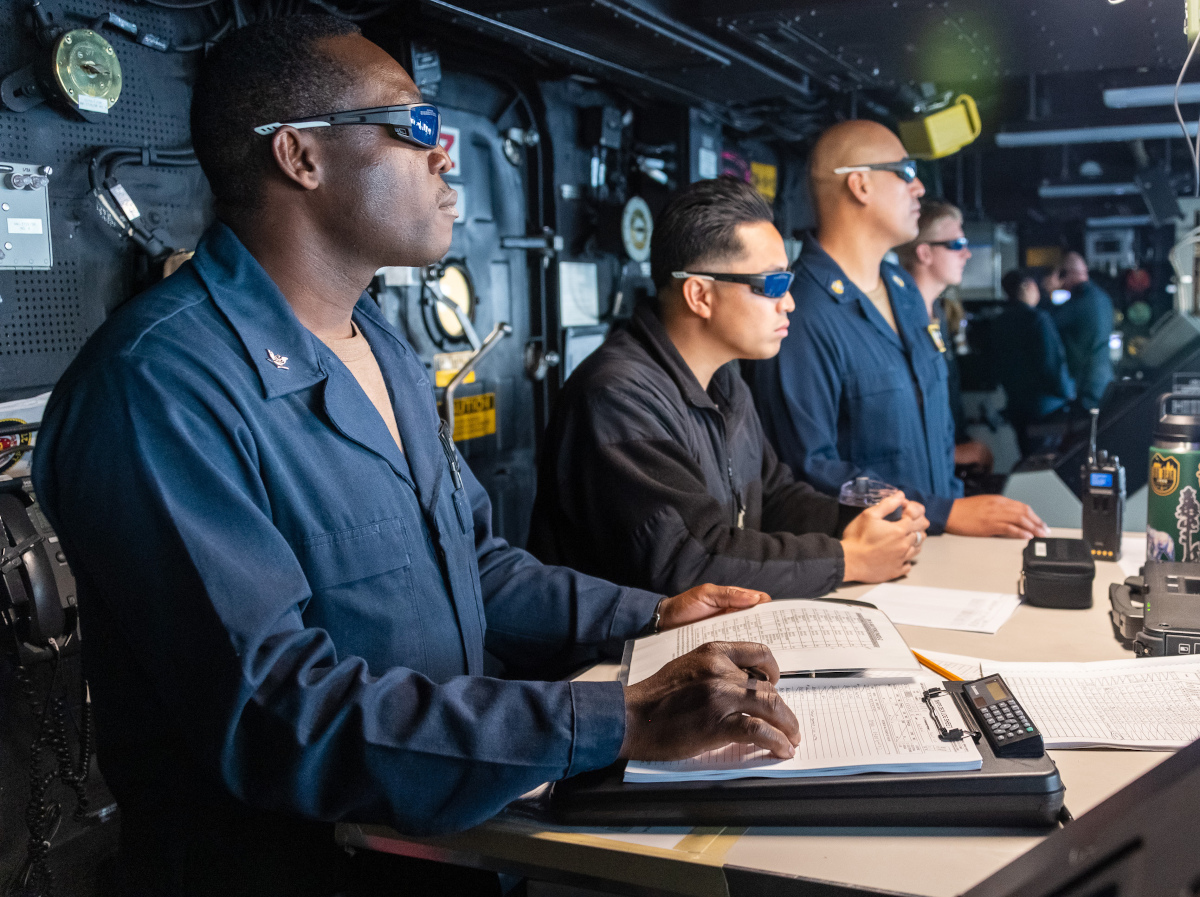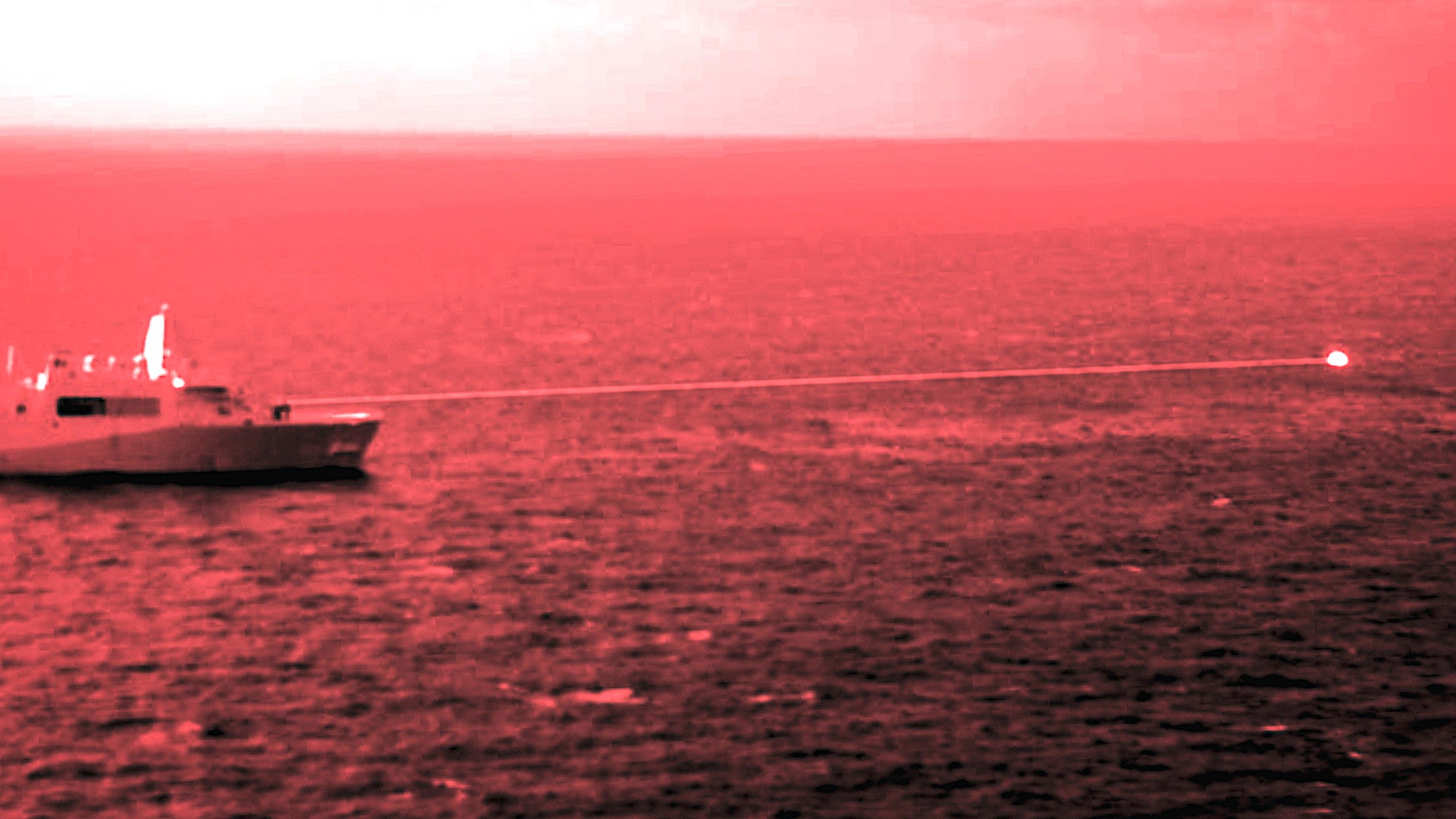The U.S. Navy’s San Antonio class amphibious transport dock ship USS Portland engaged a static surface training target with its laser directed energy weapon in the Gulf of Aden yesterday. This ship received this weapon, which is officially called the Laser Weapon System Demonstrator Mk 2 Mod 0, in late 2019, which The War Zone
was first to report, and subsequently used it to knock down a small drone in a demonstration in the Pacific Ocean the following year.
Portland is presently in the Middle East as part of the Essex Amphibious Ready Group, which also includes the Wasp class amphibious assault ship USS Essex and the Harpers Ferry class dock landing ship USS Pearl Harbor (LSD 52). Elements of the 11th Marine Expeditionary Unit (MEU) are embarked across all three of those ships.

The U.S. Navy described Portland‘s laser as having “engaged” the raft-like floating target during the demonstration. It is unclear how much physical damage the directed energy weapon actually did to the target or whether it was considered destroyed as a result. The maximum effective range of the laser is unknown, but the images from this latest test do make clear that the beam can hit targets at a not insignificant distance away from the ship.

“The LWSD [Laser Weapon System Demonstrator] is considered a next-generation follow-on to the Laser Weapon System (LaWS) that afloat forward staging base USS Ponce (AFSB(I)-15) tested for three years while operating in the Middle East,” according to a Navy release on the demonstration in the Gulf of Aden. “The region’s geography, climate, and strategic importance offer a unique environment for technology innovation.”

The LWSD Mk 2 Mod 0, which Northrop Grumman developed for the Navy as part of the Solid-State Laser Technology Maturation (SSL-TM) program, is a 150-kilowatt class laser weapon. The War Zone was first to identify the system after it appeared in San Diego back in 2019.
It is designed primarily as a close-in defense system to help protect ships against unmanned aircraft and small boat swarms. It can also be employed as a dazzler to blind optical sensors and seeker systems, as well as function as a surveillance system leveraging the integral full-motion video cameras it otherwise uses to detect and track targets for the laser.
The video below is from the demonstration of USS Portland‘s laser in the Pacific in 2020.

As the Navy itself noted, this is not the first time it has deployed a ship to the region with an operational laser weapon. However, the LWSD Mk 2 Mod 0 is significantly more powerful than the 30-kilowatt class AN/SEQ-3 LaWS that was installed on Ponce. The AN/SEQ-3, along with the earlier 15-kilowatt class Maritime Laser Demonstrator (MLD), both of which were also developed by Northrop Grumman, were stepping stones to the design currently fitted on Portland.

It makes good sense for the Navy to have now deployed Portland to the Middle East and demonstrated the LWSD Mk 2 Mod in the region. The Gulf of Aden, situated between Yemen and Somalia, is a higher-risk area for drone and small watercraft attacks launched by Yemeni Houthi militants. For the size of the group, the Iranian-backed Houthis have an impressive arsenal of unmanned aircraft, including various types of so-called “suicide drones,” and remote-controlled explosive-laden small boats, along with cruise and ballistic missiles, naval mines, and other capabilities. The Houthis have targeted U.S. Navy vessels, among others, in the past.
Other Iranian proxies, and Iran itself, operate various kinds of small drones, including armed types, in the region. Iranian forces have been blamed for a number of suicide drone attacks on commercial ships tied to Israel just this year. This includes an attack on the Liberian-flagged, Israeli-operated tanker M/T Mercer Street in the Gulf of Oman in July, which killed one British and one Romanian national.
Iran’s Islamic Revolutionary Guard Corps (IRGC) is a particularly notable operator of small boats. The IRGC has employed them in swarms to harass U.S. naval vessels in the Persian Gulf and the Gulf of Oman on multiple occasions just this year, including two incidents where American ships fired warning shots in response.

These are exactly the kinds of threats that the LWSD Mk 2 Mod 0 is intended to help protect against and underscores why the Navy is interested in adding directed energy weapons to various ships. The particular design on Portland is just one of a number of directed energy weapons the Navy has in various stages of testing and development.
A handful of Arleigh Burke class destroyers, including the USS Dewey and USS Stockdale, are now equipped with the Optical Dazzling Interdictor, Navy (ODIN), which as the name implies is primarily a dazzler. The USS Preble, another ship of that class, is set to become the first to carry the High-Energy Laser with Integrated Optical-dazzler and Surveillance, or HELIOS, a Lockheed Martin design expected to have somewhat capabilities similar to those of the LWSD Mk 2 Mod 0. The first HELIOS system delivered to the Navy has been undergoing tests this year on land at Wallops Island in Virginia.
The Navy’s already plans to integrate more laser weapons of various types onto additional ships in the coming years. Beyond being a test of the weapon itself, Portland’s firing of the LWSD Mk 2 Mod 0 in the Gulf of Aden is a clear demonstration of the service’s progress toward a new directed-energy future.

Contact the author: joe@thedrive.com
